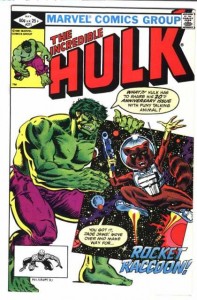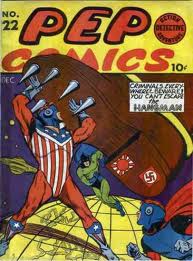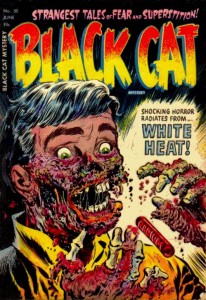 What are the key factors that drive demand and thus values in comics?
What are the key factors that drive demand and thus values in comics?
What should be on your checklist when looking to invest in a comic book?
Basic Economics 101 tells us it’s all about supply and demand and I of course agree.
We all know high demand can make common books worth tons of money, look at new Mutants #98.
Conversely low demand kill value no matter how scare a book, I’ve got a nice VG/Fine Lassie #4 and I think I’m going to put it in the $1.99 bins.
OK so let’s look at demand. My recent Undervalued Spotlight #156 earned me a comment on my claim that the Charles Biro knife through hand cover was a positive feature, I thought it was.
Let’s look at what can drive the demand up for specific comic books. I’m going to name a few points in the order of importance I think they occur in. I’ll then try to touch on the points with some insights or lack thereof.
 Character. This is the most important driver of demand. Does the book feature a first appearance of a popular character? These comics are the most valuable comics. Action Comics #1, Detective Comics #27, Amazing Fantasy #15 have all topped $1,000,000 prices because of the popularity of the characters they introduced. Character is also what makes books like Pep #22 worth tons even though the covers do not feature the characters in question.
Character. This is the most important driver of demand. Does the book feature a first appearance of a popular character? These comics are the most valuable comics. Action Comics #1, Detective Comics #27, Amazing Fantasy #15 have all topped $1,000,000 prices because of the popularity of the characters they introduced. Character is also what makes books like Pep #22 worth tons even though the covers do not feature the characters in question.- Issue #. This is a topic I wrote about a while back in a post called Are #1’s Overrated. Anyway #1’s of a title always enjoy higher demand; it’s something about #1 on the cover. Marvel Comics knows this all too well and thus operate on a business model that has titles reboot every few years. Just look at the value of the DC #1s of the early 1960s. Green Lantern #1 came after 3 appearances in Showcase; JLA #1 came after 3 appearances in Brave and the Bold. Why is JLA #1 ($16,000) worth almost 3 times more than Brave and the Bold #29 ($5800). B&B #29 is the 2nd JLA book; JLA #1 is the 4th.
 Cover Appeal. Comics are a visual medium and great iconic covers can command prices well beyond what the contents of the book merit and well beyond that titles issues before and after the issue in question. Here we can look to Black Cat Mystery #50. The iridium bar face melting cover is on everybody’s want list. I’ll include Crime Does Not Pay #22 here. The cover is dramatic and gory and attracts demand because if this. In the price guide you’ll see lots of “Classic Cover” denotations by the Overstreet guide. These covers have been centered out by the collecting community as worth paying more for just because they stand out.
Cover Appeal. Comics are a visual medium and great iconic covers can command prices well beyond what the contents of the book merit and well beyond that titles issues before and after the issue in question. Here we can look to Black Cat Mystery #50. The iridium bar face melting cover is on everybody’s want list. I’ll include Crime Does Not Pay #22 here. The cover is dramatic and gory and attracts demand because if this. In the price guide you’ll see lots of “Classic Cover” denotations by the Overstreet guide. These covers have been centered out by the collecting community as worth paying more for just because they stand out.- Hype. This is where some shock to the system awakens dormant demand. Here we’ve seen many examples of books that have wallowed in the mire for years until some movie deal sends interest in the character/s through the roof. Think Marvel Superheroes #18. Here we have to luck in and pack rats that have kept everything can just dive into their boxes as some announcement drives demand up for ever increasingly obscure characters. Rocket Racoon anyone?
- Scarcity of grade. As long as there is some level of demand for a comic you’ll find the dwindling supply of copies in the higher grades have the effect of sending prices through the roof. Look at Walking Dead #1 CGC 9.8 vs CGC 9.9 prices as an example. Here we have to watch scarcity of grade vs scarcity of CGC graded copies, two different things.
- Creative Teams. Give me a Neal Adams Batman over any other Bronze Age Batman artist. The Bernie Wrightson House of Mystery issues command the most demand. Alan Moore scripts, Frank Miller scripts, Frank Frazetta pencils etc all create more demand for comics.
These are important factors of demand. Did I get the order right? Are there factors more important?



All good points Walt. In a slabbed world covers rate high. I think another factor that drives demand is the rate of return from an investors standpoint. This occurs later in the demand cycle, but has an effect on the price of the book long term. ROI can create demand long after the initial demand was created.
These top my list. Of course, I’ll also buy a book if it contains a sudden change or dramatic revelation about a particular character. I know they are relatively worthless, but I treasure my collect of NOW Green Hornets, not because of the Steranko covers, but because they introduce the Green Hornet “dynasty” or “family mantle” factor for the first time. As always, I put good writing ahead of good art. I’d rather have a good story and OK art than an OK story and fantastic art. That also makes a difference for me. Of course, how much I will pay for a book will vary. I’ll have to at least have a good chance of getting my money back.
Walt, a little off the topic, but i’ve been wondering about long term storage, and protecting the collection against fire/theft. obviously, we can’t put thousands of comics in a vault or safe to protect them. what’s the best way to preserve the books? what do you do with your more expensive books long term?
Can you set aside that VG/Fine Lassie # 4 for me Walt ?
Hi Walter:
I like your list and examples. Creative Team is definitely an important one, but I still can’t understand why Green Lantern # 76 is almost $3000 for near-mint now.
Death issues of key characters are also very key. Off the top of my head: I can think of Death of Green Goblin, Death of Gwen Stacy, Death of Electra — all valuable issues.
Origin issues are also very important, especially if the first appearance issue did not explain the character’s origin. Key origin issues include Amazing Spider-man #40 and Detective # 33.
2.5
5